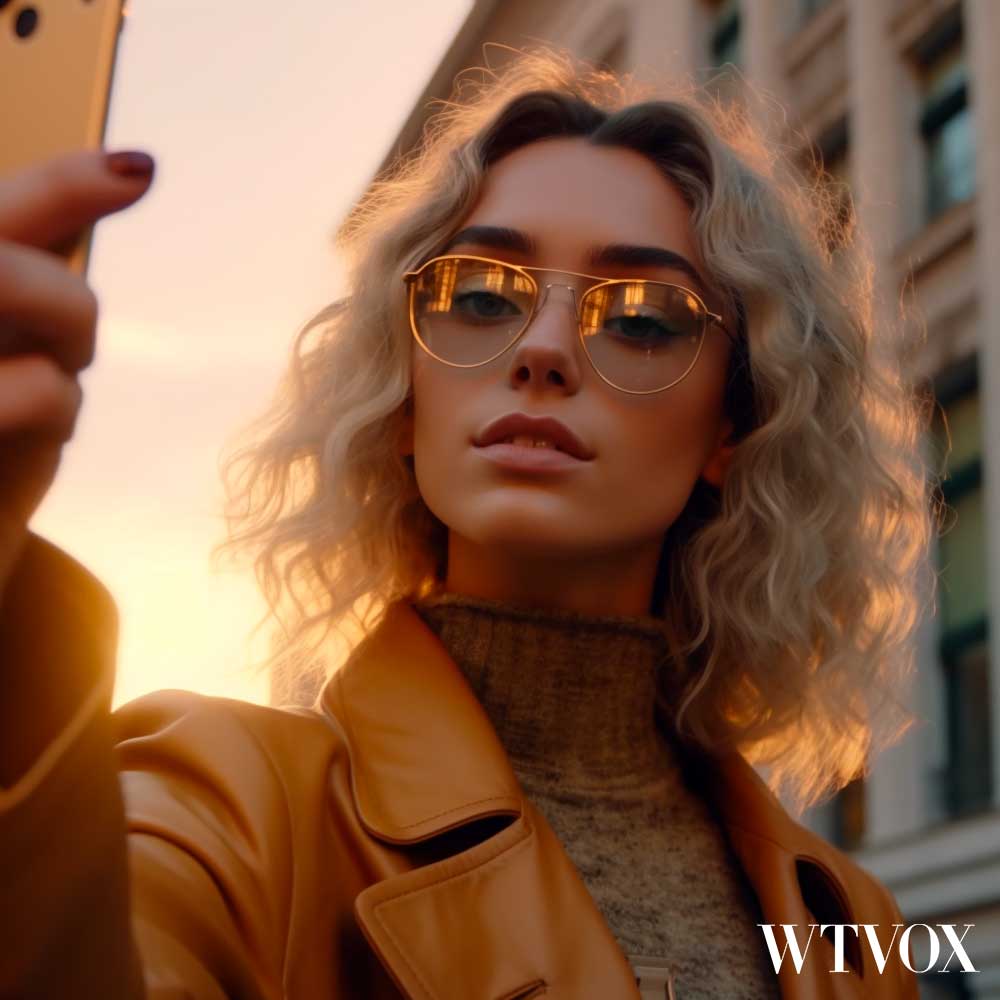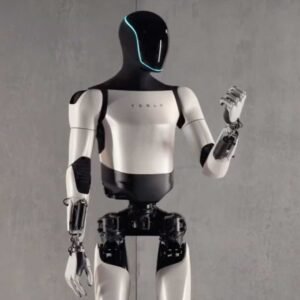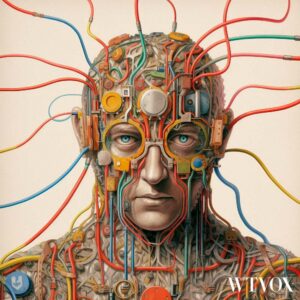The increasing level of digitization impacts all known industries and trades. In finance, transportation, agriculture, or health care, nothing is left untouched, not even fashion.
Technological advances innovate, for the first time in the history of fashion, not only the garments we wear but the industry in its entirety and all of its constituting parts.
Remember the huge customer service call centers where you used to talk to people?
Nowadays, you talk to an AI-powered machine that can speak in ten languages and ten voices for free. No salary, to tea break, no sick pay. Those jobs are gone.
The days of organizations with large teams of salespeople traveling the country up and down?
Cars, fuel, expenses, promotional magazines, and samples; are all gone as well, as nowadays, we promote and sell almost anything online. Blockbuster and its employees?
Replaced by Netflix, Amazon Prime, and Apple TV, we now consume digitized information on blogs, podcasts, and videos, on smartphones, laptops, and tablets.
Everything changes in manufacturing, textiles, designs, and customer services, and through its latest accretions, namely artificial intelligence and virtual reality, technology is also replacing human intuition with scientific facts and figures.
AI is able to predict trends, social media movements, the power of big data, and the generation gap; it is all here.
As certain technologies see faster adoption and more noticeable changes than others, the following eight technological advancements augmenting the fashion industry are presented in logical yet digestible order, especially for those of you more fashion than tech-inclined.
A NEW TYPE OF CUSTOMER
The speed of change is the number one variable most fashion brands struggle with. Tech, but most importantly, the consumer changes.
When Mark Zuckerberg offered to purchase Snapchat for 3 billion US dollars back in 2013, most people thought he had gone crazy.
What Mark knew was that the 14-year-old users of Snapchat were never going to become Facebook users, and he had to connect, control, and interact with “the next ones” somehow.
So far, he has “the right ones” on Instagram. However, with every day that passes by, Snapchat grows into that “next one,” with the next customers and consumers.
It is inevitable. What started as a platform for college kids (Facebook) is now a platform for your grandparents. Moreover, with its fastest growing segment in the 40 to 50 years old women, Instagram is the next in line.
That being said, don’t be too surprised if one of these days, Facebook or Instagram launches a sort of Snapchat competitor. As a fashion brand, you have to know where your “eyes and ears” are.
Whom do you target? What are you selling? If you want to sell to a 16-year-old girl in the U.S., you must get on Snapchat right now.
If less than a year ago, your parents had no idea what Instagram was, nowadays, they are the platform’s main users.
Instagram is already outdated as social media evolves and gets older, with its members, at the same time. Facebook? Forget about it. Undoubtedly, there are hundreds of millions of people on social media, but figuring out who’s using what is paramount.
NEW WAYS OF ADVERTISING
If ten years ago, the Yellow Pages directory was “the bible” of your local businesses, the simple exercise of asking teenagers for a spare book would only leave them perplexed.
There’s no such thing as Yellow Pages in their world. In a comparable way, the same fate expects the glossy, luxurious fashion magazines and the armies of employees behind them.
Their influence has diminished as a new breed of fashion “gurus” has arisen as a direct social media outcome: the fashion influencers.
Often criticized for their very young age and modest fashion experience, this new generation has tremendous influencing power, greater than the fashion brands, designers, and online magazines together, thanks to their global armies of social media followers.
Digitization has also created not only a new type of influencer but also a new kind of fashion consumer; tablets, laptops, and smartphones have become the weapons of choice.
This Snapchat generation kind of customer, if you like, no longer buys printed content, newspapers, and glossy magazines but relies on videos, social media, and fashion blogs for information before making a purchase.
The Snapchat generation will only learn about us from their history and economic books. How medicine, transport, life, and markets were before.
Their reality will not know anything different than paying with digital currencies via smartphones and smartwatches, communicating via Whatsapp, “reading” the latest news on Twitter, watching Instagram and YouTube, or conversing with emojis and hashtags.
ARTIFICIAL INTELLIGENCE
“Fashion is about innovation and digital is a journey that companies need to take. You have to be totally connected as if you don’t, I do not know what your business model is in five years.” Angela Ahrendts, former CEO of Burberry.
The technological shift has brought more than just a new generation of influencers and consumers; artificial intelligence (AI), virtual and augmented reality (VR/AR), 3D Printers, and wearable technology are all recent technological developments, disrupting industries and business models all over the world.
Thanks to AI, the trend-watching game in fashion is no longer based on instincts, buyers, and associates but on real customer data.
Aggregating multiple points of interaction, such as smartphones, wearables, IoT (smart labels), and social media, lets the AI not take over and replace the head of design but rather enhance his/her creative process, supporting the decision-making process by quantifying everything, in a more comprehensive way.
For example, the head of design already knows that black and green are his chosen colors for the next collection, but this time AI can help, through volume quantification, showing exactly what trends are rising.
Analyzing the consumer’s response to social media noise, tweets, re-tweets, shares, likes, and comments, helps the AI understand the overall sentiment and determine with high accuracy not only what is relevant and what is not, but most importantly, why.
For example, one of the latest apps I have been introduced to is GoFind, an AI-powered search engine for fashion garments. Take a pic via the app, and the AI searches through 1000+ online stores, across 100 million items, in seconds.
3D PRINTING & WEARABLE TECH IN GARMENTS
“There was a time when even the metal needle would have been seen as shocking and profoundly new.” Jonathan Ive, Chief Design Officer at Apple.
It took quite a long time to leave the needle behind. In fact, luxury fashion still honors the needle as the ultimate tool in the hands of a skilled workman, the essence of craftsmanship, and handmade luxury goods.
However, new automatic stitching machines and laser cutting industrial robots have transformed garments and clothes, once regarded as haute couture, into modern fast fashion, with global coverage, at a fraction of the starting price.
The rise of smart sensors, wearable tech, and 3D printing brings extra functionality to our clothes. From garments that we wore to keep us safe, warm, and decent and showcase our personal identity to smart clothes that can interact with us and the world around us.
BIG DATA AND THE NEW RETAIL STORE
“BigData isn’t here to replace the design leads; it is here to support and enable them.” Olivier Zimmer, Fashion Data Scientist and Lead Global Analyst at Google.
The AI can also “filter” through vast amounts of data and decide if it is economically feasible to keep an existing brick-and-mortar store in a particular location or, if needed, set up new ones in key locations for the brand’s image.
By 2022, most brick-and-mortar fashion stores will be converted into exhibition or publicity stores.
Their role will be to support and promote the online e-commerce platforms, giving the customers interested in their brand physical access to the garments, interacting with the fabrics, materials, and accessories, and even trying them in persona.
IOT FOR A BETTER CUSTOMER SERVICE
At this moment in time, most in-st0re IoT devices are used to create heat maps that can help the brands determine where their shoppers spend most of their time, enabling them to further refine the in-store experience.
Customer experience service plays a critical role in fashion retail; therefore, understanding better your buyer’s specific needs and demands comes first.
The next generation of IoT devices can interact, from a distance, with the visitor’s smart garments, accessories, and mobile phones, helping the brand and its sales assistants provide much better, customized experiences.
With comprehensive data from the customer’s wearables, fitness trackers, and smart labels, the fashion brand gains the power to understand its customers further, not only from a geo-socio-demographic point of view but also by body type, size, and health level.
The new IoT devices can collect, analyze and compare data to better understand the consumer’s preferences, even before entering the store, and allow highly personalized customer experiences.
DIGITAL MIRRORS/3D SCANNERS, NEW FITTING ROOMS
Not only the role of the retail stores has to change, but also the fitting and the layout have to change as well.
We already see fashion retail stores fitted with interactive 3D-AR mirrors as a natural progression from the existing changing rooms.
The 3D-AR mirrors can take accurate measurements of a customer’s body, thanks to its 3D scanning technology – in less than a minute, eliminating the need for “tape measuring” by shop assistants followed by recommendations of the most suitable sizes.
Moreover, as consumers become ever more connected, store representatives must have the knowledge, skill set, and desire to offer the best possible experience.
Many fashion retailers have already started emulating the experiences of tech retailers, like Apple, and changing their structure so the store assistants become fundamental parts of the marketing process, from start to finish.
AUGMENTED/VIRTUAL REALITY EXPERIENCE
Generation Y, or Millennials, and the growing Generation Z have a strong connection with the digital world. Both generations treat their smartphones like a continuation of their family and are constantly scanning for an internet connection.
Their desire of being able to connect and interact with the online world and social media, leaves most fashion retailers struggling to understand and keep up with what they expect from a retail experience.
However, the augmentation of the retail stores does not stop with smart mirrors and 3D scanners but continues with AR and VR, fully operational by 2020.
With AR and VR, the clients have access to experience any possible combinations of garments, accessories, and styles without having to get undressed or the store having to stock the actual goods on-site.
And before AR and VR reach their maturity, there are signs that fashion is adapting, adopting, and innovating in its attempts to meet the demands of the new generation: In-store connectivity, entertainment, and power.
CLICK & COLLECT/DRONES DELIVERY
Once the client has finalized its shopping experience in the physical store, as there is no stock available, the company has to employ new, innovative delivery methods.
Across both online and in-store shopping, the price remains the number one attraction for almost 70% of buyers.
However, if the fashion brands are not competing at the price level, they are already competing on the speed of their deliveries.
The number one asset in the world is your time. Uber, AirBnB, and InstaCart are not accidents but a preview of what’s coming. Time has always been money.
Imagine for a second that your computer, your smartphone, or your internet is slower than how it normally is. How annoying that would be. Why? Because you praise your time so much that you don’t even realize it.
The “click and collect” option is already available. In this case, the goods are delivered to a collection point within the store if that is the buyer’s choice.
The second option is the “30-minute service”, where a delivery drone takes the shopping, from the brand’s warehouse, straight to the customer’s home, available even before they arrive home.
Not yet been implemented due to pending regulations, but expected to become fully operational by 2020.
CONCLUSION
Rapid technological developments, the pervasiveness of mobile commerce, the rise of a new type of consumer, fast movement to customer-centric retailing, and personalized shopping experiences demand fundamental changes in fashion.
Changes very much needed to achieve customer satisfaction, business growth, and profitability.
The days of anonymous shopping experience are long gone; fashion brands must recognize the rise in customer expectation and transform in-store engagement through digital personalization and tailored in-store experiences.
However, the fashion industry will not only survive the technological changes but emerge even stronger than before. Layering technology with heritage, craftsmanship, and human touch creates uniqueness and priceless perfection.
If fashion is the ultimate image of self-expression, then technology has to be the perfect tool for broadcasting that representation to an extent unimagined before.






